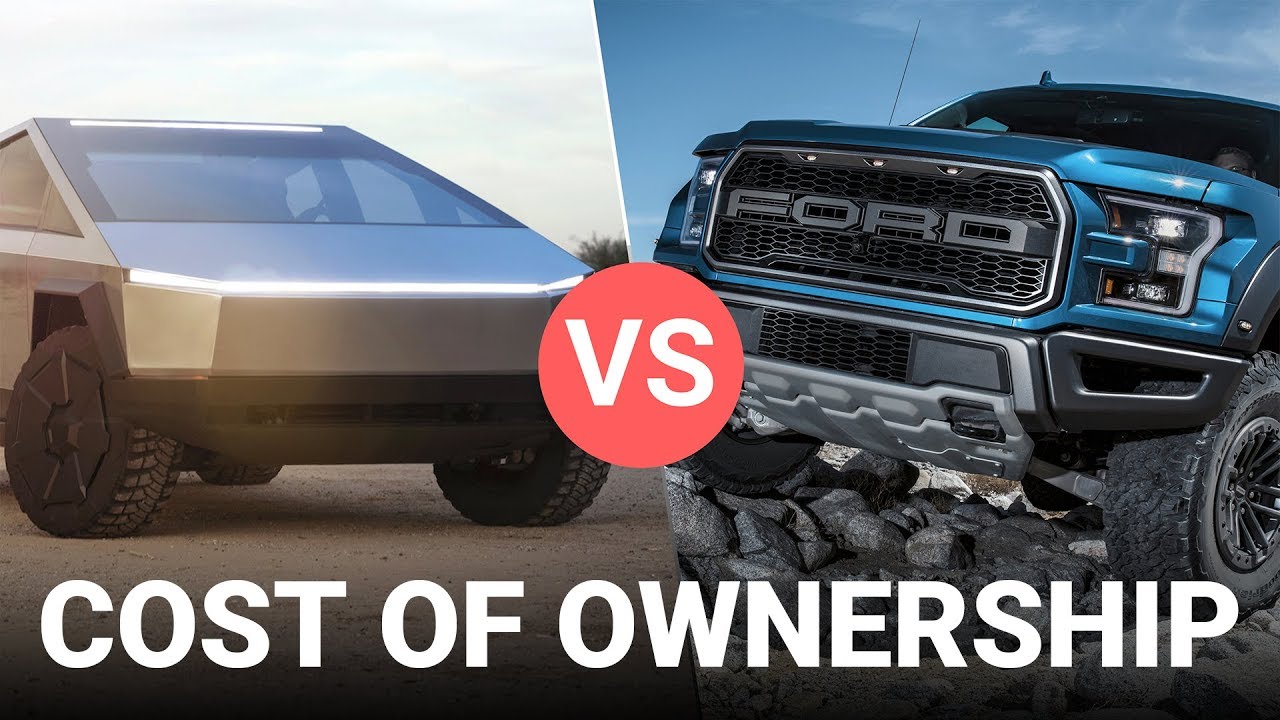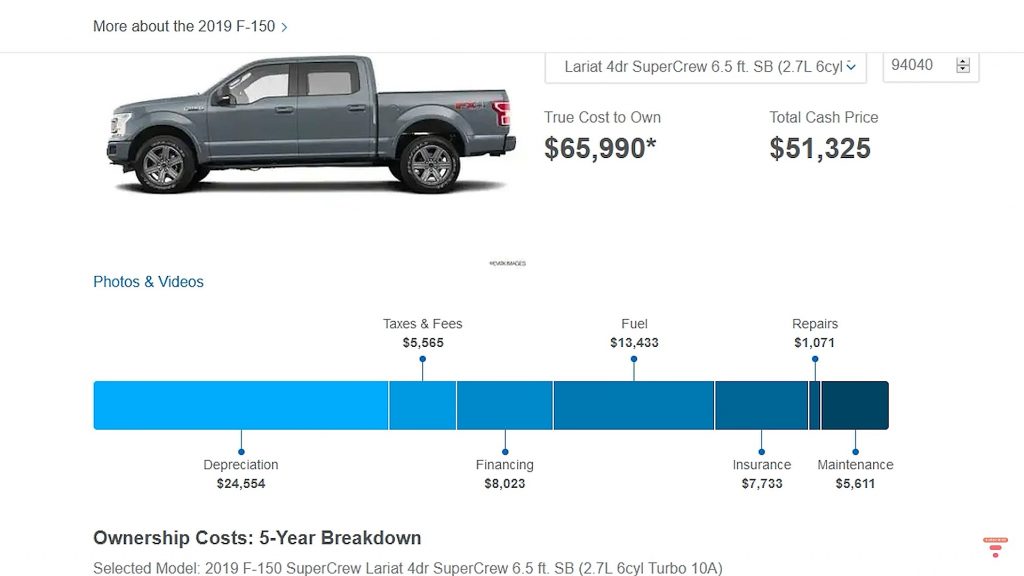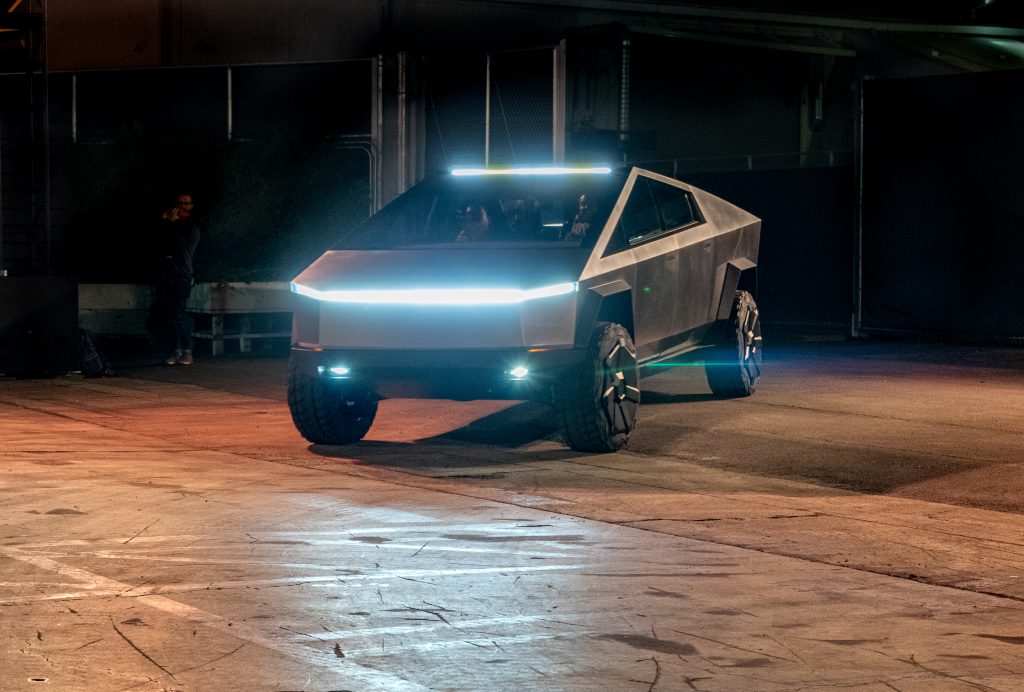

News
Tesla Cybertruck vs Ford F-150: Cost of ownership battle ends with eye-opening results
The Tesla Cybertruck offers several benefits that make it an ideal alternative to conventional pickup trucks like the best-selling Ford F-150. But beyond its polarizing design and healthy set of features, one thing may really be the difference-maker for customers who are considering a Cybertruck purchase: its cost of ownership.
Pickups are very popular in the United States, holding about 17% of the US auto sales market last year. Yet, for all their popularity, trucks are also notoriously expensive to own, thanks to their large engines that guzzle fuel. Considering that the Tesla Cybertruck promises a lower cost of ownership compared to traditional trucks like the Ford F-150, it then becomes pertinent to run the numbers between the futuristic upstart and the tried-and-tested veteran.
This was the topic of a recent video from Tesla owner-enthusiast Ben Sullins of YouTube’s Teslanomics channel. In his video, Sullins compared the cost of ownership between the Tesla Cybertruck and the Ford F-150 over a five-year period. The results were notably eye-opening.

Sullins opted to utilize the Ford F-150 because it is the most popular pickup in the United States. He also selected the 2020 Ford F-150 Lariat SuperCrew as the truck of choice for his comparison, since the variant was the trim which received Edmunds‘ recommendation. This version was compared with the Tesla Cybertruck’s Dual Motor AWD variant, which CEO Elon Musk noted was receiving the majority of reservations from consumers. To make the comparison as fair as possible, Sullins opted for options in the F-150 that would make it as similar to the mid-level Cybertruck as possible, such as 4×4 and a six-seat configuration.
For the vehicle’s true cost of ownership over 5 years, the Teslanomics host referred to Edmunds‘ TCO metrics, which includes Depreciation, Taxes and Fees, Financing, Fuel, Insurance, Repairs, and Maintenance. Considering that the Cybertruck is not on the road yet, Sullins opted to estimate the all-electric pickup’s depreciation, taxes and fees, and financing on the F-150’s numbers. The same was true for the Cybertruck’s estimated insurance costs.
Things started to diverge when maintenance and fuel costs between the two vehicles were considered. The Tesla Cybertruck’s maintenance will likely be marginal compared to the F-150, which is equipped with an internal combustion engine. Fuel costs were also very different between the two vehicles. If one were to consider the average price of fuel in CA and TX and a yearly mileage of 15,000 miles, a Ford F-150 owner in CA could spend about $3,183 in fuel costs per year considering the state’s average fuel cost of $3.82 per gallon. An F-150 owner in TX, where gas prices average $2.24 per gallon, could spend about $1,866 per year in fuel costs.

In comparison, a Cybertruck owner in CA, where electricity costs a pretty steep $0.26 per kWh on average, will spend about $1,950 in charging costs for a year. A Cybertruck owner from TX, where electricity costs $0.09 per kWh, could spend as little as $675 per year. It’s pertinent to note that these costs do not account for off-peak hours, where electricity is cheaper.
Overall, Sullins estimated that the total cost of ownership for a Ford F-150 in CA would be around $72,459 over five years, while one in TX stands at about $65,467. Thanks to low charging and maintenance costs, the Cybertruck would likely have a TCO of $53,379 in CA and $46,610 in TX, respectively. That’s a difference of $19,080 and $18,858 over the course of five years. Of course, if a Tesla owner charges the Cybertruck through solar panels, then the TCO of the all-electric vehicle will be even lower.
Inasmuch as the Cybertruck is polarizing for its looks, it is difficult not to see the value of the vehicle when it comes to cost of ownership compared to traditional pickups. This is something that is key to potential Cybertruck customers such as companies that are managing fleets of vehicles. If something like the Cybertruck comes along and offers the same utility and better performance while offering lower operating costs, there is very little incentive to ignore the vehicle just because it doesn’t look like every other pickup in the market.
Watch Ben Sullins’ breakdown of the Tesla Cybertruck and the Ford F-150’s cost of ownership in the video below.
News
Tesla UK sales see 14% year-over-year rebound in June: SMMT data
The SMMT stated that Tesla sales grew 14% year-over-year to 7,719 units in June 2025.

Tesla’s sales in the United Kingdom rose in June, climbing 14% year-over-year to 7,719 units, as per data from the Society of Motor Manufacturers and Traders (SMMT). The spike in the company’s sales coincided with the first deliveries of the updated Model Y last month.
Model Y deliveries support Tesla’s UK recovery
Tesla’s June performance marked one of its strongest months in the UK so far this year, with new Model Y deliveries contributing significantly to the company’s momentum.
While the SMMT listed Tesla with 7,719 deliveries in June, independent data from New AutoMotive suggested that the electric vehicle maker registered 7,891 units during the month instead. However, year-to-date figures for Tesla remain 2% down compared to 2024, as per a report from Reuters.
While Tesla made a strong showing in June, rivals are also growing. Chinese automaker BYD saw UK sales rise nearly fourfold to 2,498 units, while Ford posted the highest EV growth among major automakers, with a more than fourfold increase in the first half of 2025.
Overall, the UK’s battery electric vehicle (BEV) demand surged 39% to to 47,354 units last month, helping push total new car sales in the UK to 191,316 units, up 6.7% from the same period in 2024.
EV adoption accelerates, but concerns linger
June marked the best month for UK car sales since 2019, though the SMMT cautioned that growth in the electric vehicle sector remains heavily dependent on discounting and support programs. Still, one in four new vehicle buyers in June chose a battery electric vehicle.
SMMT Chief Executive Mike Hawes noted that despite strong BEV demand, sales levels are still below regulatory targets. “Further growth in sales, and the sector will rely on increased and improved charging facilities to boost mainstream electric vehicle adoption,” Hawes stated.
Also taking effect this week was a new US-UK trade deal, which lowers tariffs on UK car exports to the United States from 27.5% to 10%. The agreement could benefit UK-based EV producers aiming to expand across the country.
News
Tesla Model 3 ranks as the safest new car in Europe for 2025, per Euro NCAP tests
Despite being on the market longer than many of its rivals, the Tesla Model 3 continues to set the bar for vehicle safety.

The Tesla Model 3 has been named the safest new car on sale in 2025, according to the latest results from the Euro NCAP. Among 20 newly tested vehicles, the Model 3 emerged at the top of the list, scoring an impressive 359 out of 400 possible points across all major safety categories.
Tesla Model 3’s safety systems
Despite being on the market longer than many of its rivals, the Tesla Model 3 continues to set the bar for vehicle safety. Under Euro NCAP’s stricter 2025 testing protocols, the electric sedan earned 90% for adult occupant protection, 93% for child occupant protection, 89% for pedestrian protection, and 87% for its Safety Assist systems.
The updated Model 3 received particular praise for its advanced driver assistance features, including Tesla’s autonomous emergency braking (AEB) system, which performed well across various test scenarios. Its Intelligent Speed Assistance and child presence detection system were cited as noteworthy features as well, as per a WhatCar report.
Other notable safety features include the Model 3’s pedestrian-friendly pop-up hood and robust crash protection for both front and side collisions. Euro NCAP also highlighted the Model 3’s ability to detect vulnerable road users during complex maneuvers, such as turning across oncoming traffic.
Euro NCAP’s Autopilot caution
While the Model 3’s safety scores were impressive across the board, Euro NCAP did raise concerns about driver expectations of Tesla’s Autopilot system. The organization warned that some owners may overestimate the system’s capabilities, potentially leading to misuse or inattention behind the wheel. Even so, the Model 3 remained the highest-scoring vehicle tested under Euro NCAP’s updated criteria this year.
The Euro NCAP’s concerns are also quite interesting because Tesla’s Full Self-Driving (FSD) Supervised, which is arguably the company’s most robust safety suite, is not allowed for public rollout in Europe yet. FSD Supervised would allow the Model 3 to navigate inner city streets with only minimal human supervision.
Other top scorers included the Volkswagen ID.7, Polestar 3, and Geely EX5, but none matched the Model 3’s total score or consistency across categories. A total of 14 out of 20 newly tested cars earned five stars, while several models, including the Kia EV3, MG ZS, and Renault 5, fell short of the top rating.
Elon Musk
Why Tesla’s Q3 could be one of its biggest quarters in history
Tesla could stand to benefit from the removal of the $7,500 EV tax credit at the end of Q3.

Tesla has gotten off to a slow start in 2025, as the first half of the year has not been one to remember from a delivery perspective.
However, Q3 could end up being one of the best the company has had in history, with the United States potentially being a major contributor to what might reverse a slow start to the year.
Earlier today, the United States’ House of Representatives officially passed President Trump’s “Big Beautiful Bill,” after it made its way through the Senate earlier this week. The bill will head to President Trump, as he looks to sign it before his July 4 deadline.
The Bill will effectively bring closure to the $7,500 EV tax credit, which will end on September 30, 2025. This means, over the next three months in the United States, those who are looking to buy an EV will have their last chance to take advantage of the credit. EVs will then be, for most people, $7,500 more expensive, in essence.
The tax credit is available to any single filer who makes under $150,000 per year, $225,000 a year to a head of household, and $300,000 to couples filing jointly.
Ending the tax credit was expected with the Trump administration, as his policies have leaned significantly toward reliance on fossil fuels, ending what he calls an “EV mandate.” He has used this phrase several times in disagreements with Tesla CEO Elon Musk.
Nevertheless, those who have been on the fence about buying a Tesla, or any EV, for that matter, will have some decisions to make in the next three months. While all companies will stand to benefit from this time crunch, Tesla could be the true winner because of its sheer volume.
If things are done correctly, meaning if Tesla can also offer incentives like 0% APR, special pricing on leasing or financing, or other advantages (like free Red, White, and Blue for a short period of time in celebration of Independence Day), it could see some real volume in sales this quarter.
You can now buy a Tesla in Red, White, and Blue for free until July 14 https://t.co/iAwhaRFOH0
— TESLARATI (@Teslarati) July 3, 2025
Tesla is just a shade under 721,000 deliveries for the year, so it’s on pace for roughly 1.4 million for 2025. This would be a decrease from the 1.8 million cars it delivered in each of the last two years. Traditionally, the second half of the year has produced Tesla’s strongest quarters. Its top three quarters in terms of deliveries are Q4 2024 with 495,570 vehicles, Q4 2023 with 484,507 vehicles, and Q3 2024 with 462,890 vehicles.
-

 Elon Musk4 days ago
Elon Musk4 days agoTesla investors will be shocked by Jim Cramer’s latest assessment
-

 News1 week ago
News1 week agoTesla Robotaxi’s biggest challenge seems to be this one thing
-

 Elon Musk2 weeks ago
Elon Musk2 weeks agoFirst Look at Tesla’s Robotaxi App: features, design, and more
-

 News2 weeks ago
News2 weeks agoSpaceX and Elon Musk share insights on Starship Ship 36’s RUD
-

 News2 weeks ago
News2 weeks agoWatch Tesla’s first driverless public Robotaxi rides in Texas
-

 News1 week ago
News1 week agoWatch the first true Tesla Robotaxi intervention by safety monitor
-

 News2 weeks ago
News2 weeks agoTesla has started rolling out initial round of Robotaxi invites
-

 Elon Musk2 weeks ago
Elon Musk2 weeks agoTesla to launch in India in July with vehicles already arriving: report

















